The prospect of fibroid surgery can be daunting. Many women wonder, ‘Is it as painful as it sounds?’ Let’s unravel the truth behind the pain.
Is fibroid surgery painful?
If you or someone you know is facing the possibility of undergoing fibroid surgery in Nigeria, this is a question that might be weighing heavily on your mind.
In this comprehensive blog post, we will go through fibroid surgery, focusing on the potential pain and discomfort associated with the procedure.
Stay with us as we explore this topic, address your concerns, and provide insights that can make a difference in your fibroid surgery journey.
Before we dive into the details of fibroid surgery and its potential pain, let’s first ensure we have a solid understanding of fibroids and why surgery may be necessary.
What Are Fibroids?
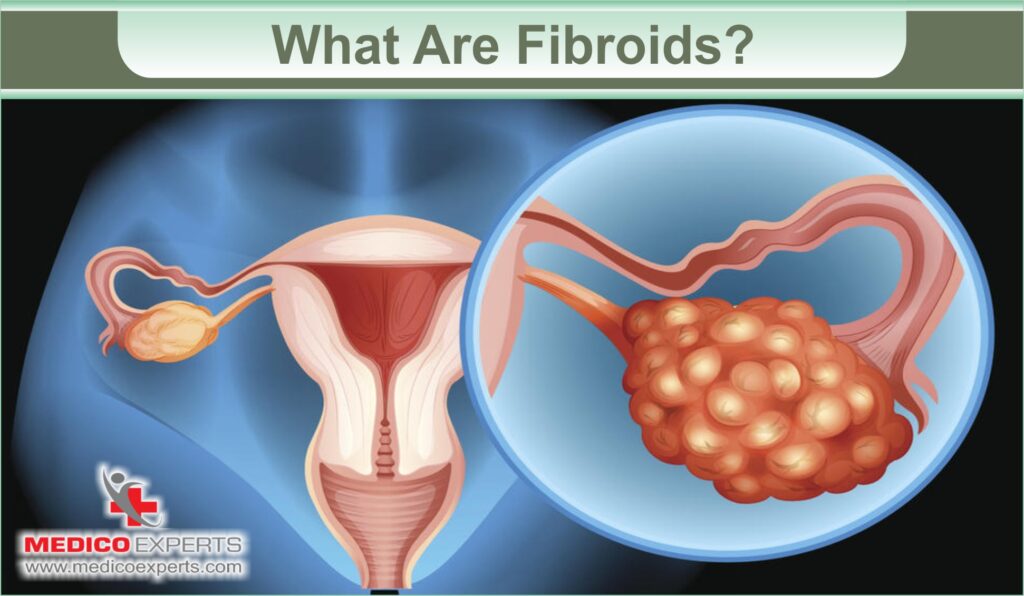
Fibroids are benign tumors that grow within the muscular walls of the uterus. They can vary in size, from small, pea-sized growths to large, grapefruit-sized masses.
What Are Types Of Fibroids?
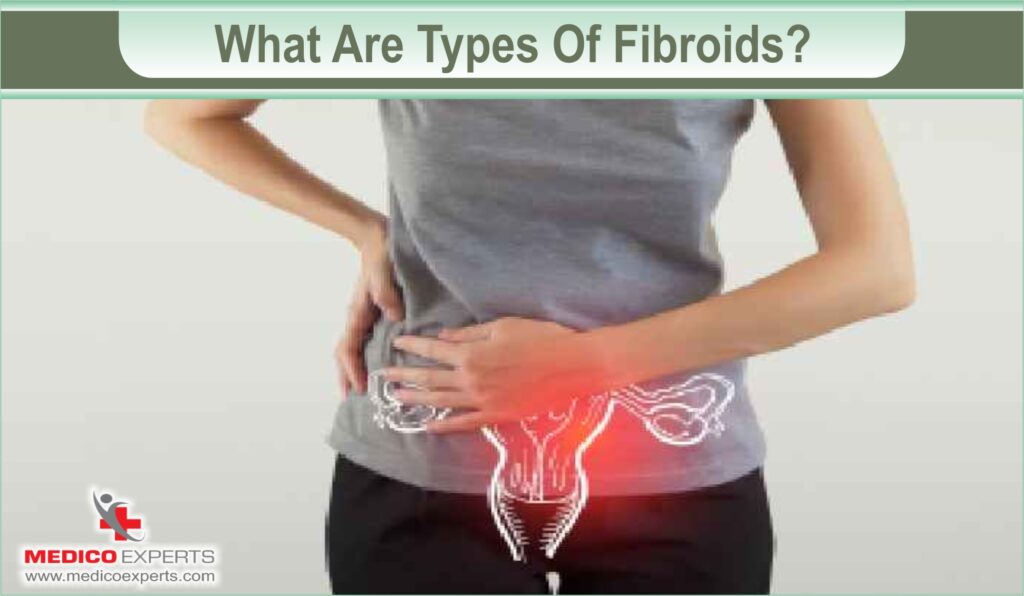
Fibroids are classified into different types based on their location within the uterus:
1. Subserosal fibroids:
These are growths that develop on the exterior wall of the uterus.
2. Intramural fibroids:
These develop within the muscular wall of the uterus.
3. Submucosal fibroids:
These extend into the uterine cavity.
4. Pedunculated fibroids:
There is a stalk that attaches them to the uterine wall.
Understanding the type, size, and location of your fibroids is crucial because it can influence the surgical approach and potential pain levels associated with the procedure.
What Are The Symptoms of Symptomatic Fibroids?
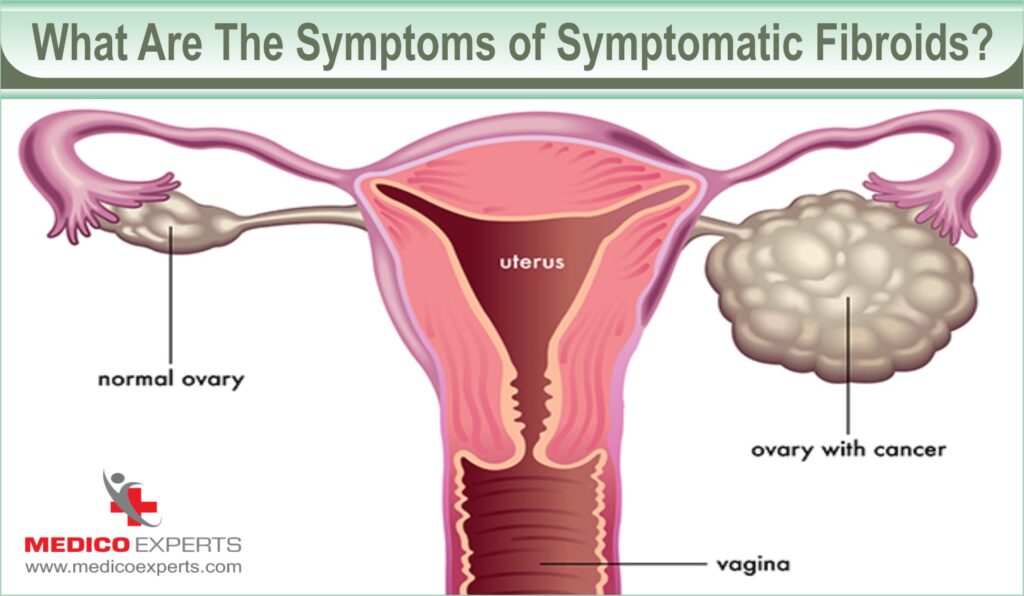
The decision to undergo fibroid surgery is typically driven by the presence of symptoms that significantly impact a person’s quality of life.
Common symptoms of symptomatic fibroids include:
- Heavy menstrual bleeding
- Pelvic pain and pressure
- Frequent urination
- Painful intercourse
- Lower backache
- Fertility issues
If you’re experiencing one or more of these symptoms, it’s essential to consult with a healthcare professional to determine if surgery is the right course of action.
Surgery is usually recommended when other treatment options fail to provide relief or when the fibroids are causing severe complications.
What Are The Risks Associated with Fibroid Surgery?
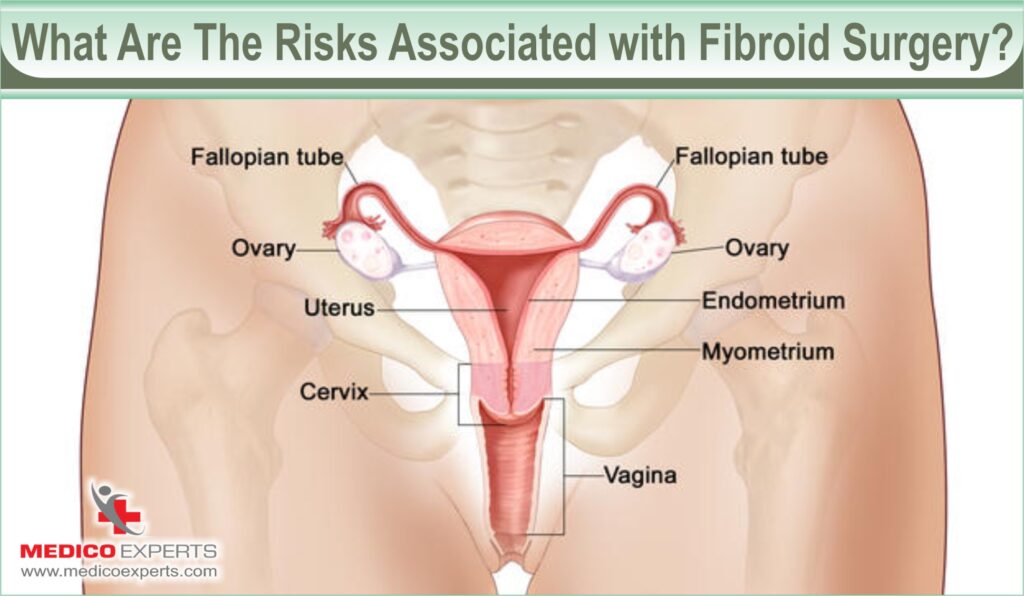
It’s important to be aware that while all of these procedures are generally safe, they do come with some potential risks.
These risks include:
- Bleeding
- Infection
- Repeated procedures may be necessary
- The rare chance of damage to organs in your abdomen, like the bladder or bowel
- Formation of scar tissue in your abdomen, which can create adhesions binding organs and tissues together
- Potential bowel or urinary issues
- Fertility concerns
- Complications during pregnancy
- A hysterectomy may be necessary in rare cases
It’s worth noting that laparoscopy, which involves smaller incisions, tends to result in less bleeding and fewer complications compared to laparotomy, which involves a larger incision.
What Are The Types of Fibroid Surgeries?
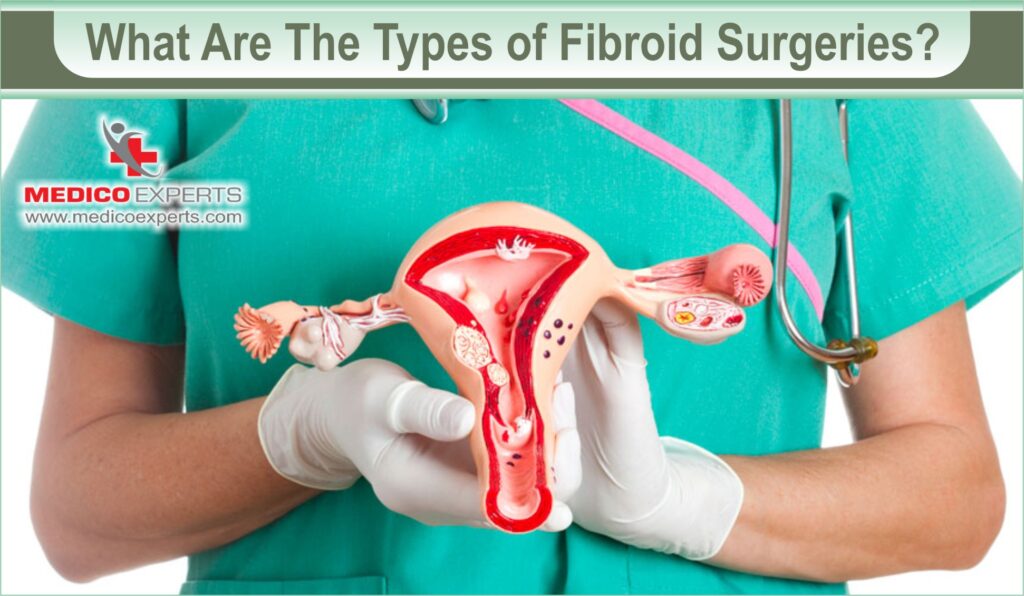
Now that we have a good understanding of fibroids and why surgery may be necessary, let’s explore the various types of fibroid surgeries and whether they are painful.
Myomectomy:
Myomectomy is a surgical procedure that aims to remove fibroids while preserving the uterus.
It is often recommended for individuals who wish to preserve their fertility or maintain their uterus.
Myomectomy can be performed in different ways:
- Abdominal myomectomy: This involves making an incision in the abdominal wall.
- Laparoscopic myomectomy: Minimally invasive surgery involves the use of small incisions and a camera to perform the procedure.
- Hysteroscopic myomectomy: is commonly used to remove uterine fibroids and other abnormal growths in the uterus.
Hysterectomy:
Hysterectomy is the surgical removal of the uterus, and in some cases, it may also involve removing the cervix and ovaries.
This procedure is generally recommended for individuals who have completed their family or when other treatments have been unsuccessful.
Hysterectomy can also be done through different approaches:
- Abdominal hysterectomy
- Vaginal hysterectomy
- Laparoscopic (minimally invasive) hysterectomy
Now that we’ve covered the basics of fibroid surgery and the types of procedures available, it’s time to address the central question: “Is fibroid surgery painful?”
Is Pain and Discomfort Common During Fibroid Surgery?
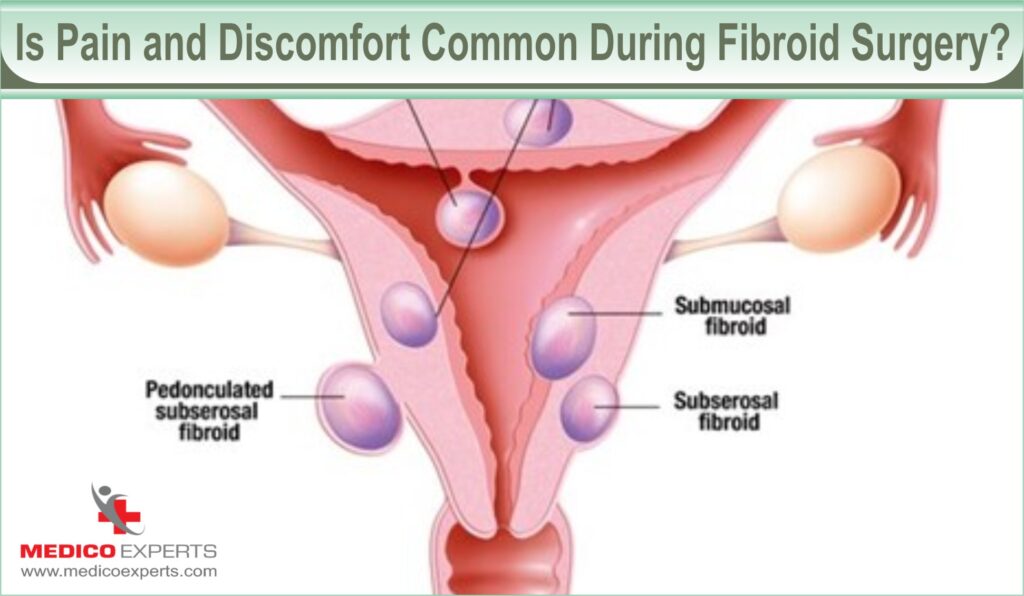
One of the most crucial questions that often arises when considering fibroid surgery is, “Is pain and discomfort common during the procedure?”
This concern is entirely understandable, as understanding what to expect is a critical part of preparing for any surgical intervention, especially when it involves a condition like fibroids.
This section will provide you with the information you need to ease your concerns and make informed decisions about your surgery.
Here are points to consider:
Anesthesia:
Fibroid surgeries are typically performed under general anesthesia, which means you’ll be completely unconscious during the procedure.
This ensures that you won’t experience pain or discomfort while the surgery is underway.
Postoperative Pain:
The extent of pain you’ll experience after fibroid surgery can vary depending on the type of surgery, the size and location of your fibroids, and your pain tolerance.
Here’s what you can generally expect:
- Myomectomy:
After a myomectomy, it’s common to experience some abdominal pain and discomfort.
This pain is usually managed with pain medications prescribed by your surgeon.
- Hysterectomy:
A hysterectomy, especially a laparoscopic or vaginal approach, often results in less postoperative pain compared to abdominal hysterectomy.
Pain medication will be provided to manage any discomfort.
What’s the usual recovery period after fibroid surgery?
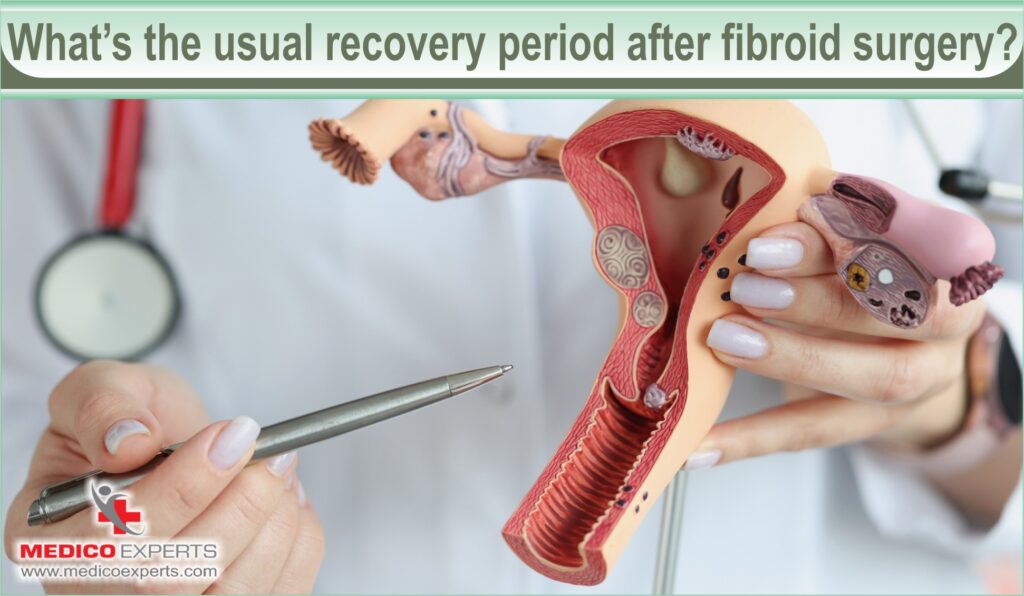
Myomectomy:
Myomectomy focuses on removing uterine fibroids and is a suitable choice if you want to keep your uterus.
Here’s what to expect:
- After an open procedure, you may stay in the hospital for a few days, while laparoscopy or hysteroscopy usually requires just one night.
- You’ll need pain medication for at least 24 hours, and expect some vaginal spotting for up to six weeks.
- During this time, it’s best to avoid sex or intercourse.
- The length of time needed to recover might be anything between two and six weeks.
Hysterectomy:
Hysterectomy is performed for various reasons, including treating uterine fibroids.
Here’s what you should know:
- Hysterectomy involves general anesthesia and a hospital stay of 2-3 days.
- The first 2-3 days can be quite painful, and constipation is common due to surgery and pain medications.
- Vaginal bleeding is expected initially and may last up to 6 weeks.
- The full recovery period is six weeks, including time off work, and nothing should be inserted into the vagina during this period.
Other Recovery Aspects:
The duration of the recovery period following fibroid surgery can vary from person to person and depends on several factors, including:
- the type of surgery performed,
- The size and location of the fibroids need to be determined for further evaluation.
- an individual’s overall health.
In general, the recovery period for fibroid surgery can range from a few weeks to several months.
During this time, you may experience:
- some level of pain,
- discomfort, and
- physical limitations as your body heals.
Pain Medications:
Your healthcare team will provide you with appropriate pain medications to manage postoperative discomfort. It’s essential to take these medications as prescribed to ensure a smoother recovery.
They will guide you on when it’s safe to resume normal activities, including work, exercise, and other daily routines.
Rest:
Adequate rest and following your surgeon’s postoperative instructions are crucial for minimizing pain and facilitating a faster recovery.
Avoid strenuous activities during the initial weeks, and gradually resume normal activities as advised by your medical team.
It’s crucial to communicate with your medical team throughout the recovery process to address any concerns or issues that may arise and ensure you are on the right track to full recovery.
What Are the Advantages and Disadvantages of Myomectomy and Hysterectomy Fibroid Surgery?
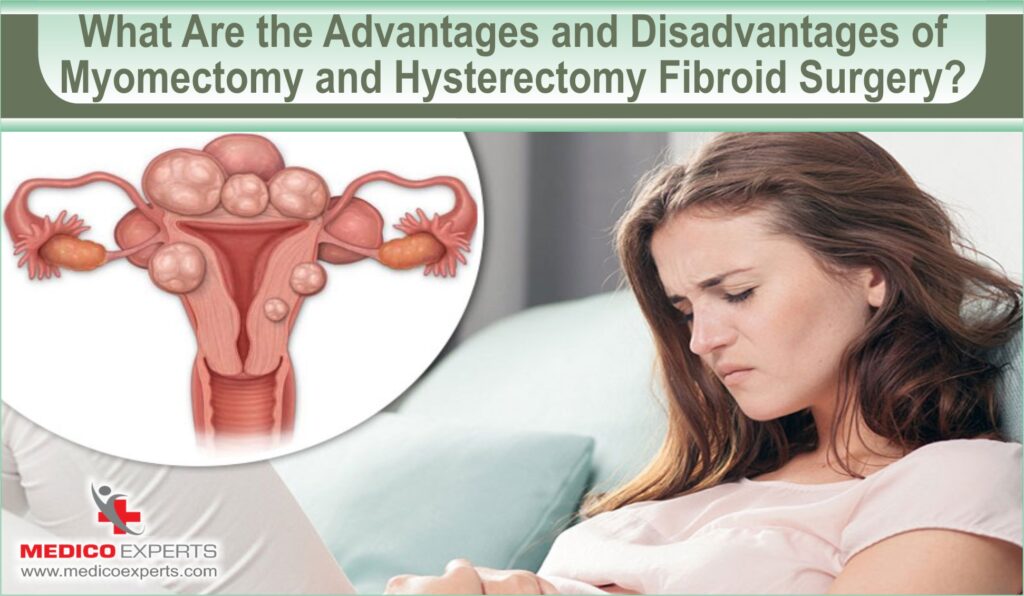
Let’s break down the advantages and disadvantages of myomectomy and hysterectomy fibroid surgery:
Myomectomy Surgery Advantages:
- This medical procedure enables the elimination of fibroids from the uterus while keeping the uterus intact.
- The surgery is suitable for women who plan to have children in the future.
- Offers an option for those with fibroids affecting fertility.
- Averts the need for complete removal of the uterus.
Myomectomy Surgery Disadvantages:
- Fibroids can potentially regrow after the procedure.
- Not all fibroids may be removable, depending on size and location.
- The recovery period can be relatively long, ranging from 2 to 6 weeks.
Hysterectomy Surgery Advantages:
- Uterine fibroids are entirely removed and cannot return.
- Effective in treating various conditions, including cancer, endometriosis, and abnormal bleeding.
- Eliminates the risk of uterine fibroids reoccurring.
Hysterectomy Surgery Disadvantages:
- Results in the inability to get pregnant due to the removal of the uterus.
- Carries the most surgical risks among all uterine fibroid treatments.
- Lengthy recovery period, including six weeks of full recovery and abstinence from vaginal intercourse.
Keep in mind that when considering your options, it’s essential to consult with a medical professional who can provide personalized guidance based on your specific medical history and goals. Your doctor will help you choose the best treatment option to ensure your health and well-being.
Conclusion
The question “Is fibroid surgery painful?” doesn’t have a one-size-fits-all answer.
The level of pain experienced during and after fibroid surgery varies as mentioned above.
While some discomfort is to be expected during the recovery period, it’s important to note that modern surgical techniques and pain management options have significantly reduced the pain associated with fibroid surgery.
It’s essential to consult with a medical expert to discuss your specific situation and determine the most suitable surgical approach for your case.
The right choice of surgery can make a significant difference in your comfort and recovery.
Keep in mind that you don’t have to go through this path by yourself. There are dedicated medical experts and teams ready to help you throughout the process.
If you or a loved one are considering fibroid surgery in Nigeria, don’t hesitate to reach out to MedicoExperts our team of experienced medical experts.
We’re here to guide you through the process, answer your questions, and provide the best care possible.
FAQ :
Q1. Is fibroid surgery the only option for treating uterine fibroids?
A. No, fibroid surgery is not the only option. There are non-surgical treatments like medication and minimally invasive procedures such as uterine fibroid embolization (UFE). The choice of treatment depends on the specific circumstances and your healthcare provider’s recommendation.
Q2. How long does it typically take to recover from myomectomy or hysterectomy?
A. The amount of time needed for recovery varies greatly depending both on the kind of operation that was performed and on the patient themselves. For myomectomy, it can range from 2 to 6 weeks, while a hysterectomy may have a longer recovery period of up to 6 weeks for full healing.
Q3. Can fibroids return after surgery?
A. Myomectomy doesn’t guarantee that fibroids won’t return, especially if you have multiple fibroids. Hysterectomy, on the other hand, eliminates the possibility of fibroids returning because it removes the uterus.
Q4. What are the potential fertility and pregnancy outcomes after fibroid surgery?
A. Myomectomy is an option for women who wish to preserve their fertility. However, it’s essential to discuss your specific situation with a healthcare provider as fertility and pregnancy outcomes can vary. Hysterectomy, on the other hand, results in infertility.
Q5. Can I choose between myomectomy and hysterectomy, or is the choice determined by the surgeon?
A. The choice between myomectomy and hysterectomy often depends on your specific circumstances and preferences. While your surgeon can provide recommendations based on your medical condition, you ultimately have a say in the decision. The team of MedicoExperts is here to help you discuss your goals and concerns to make an informed choice that aligns with your needs and future plans.



